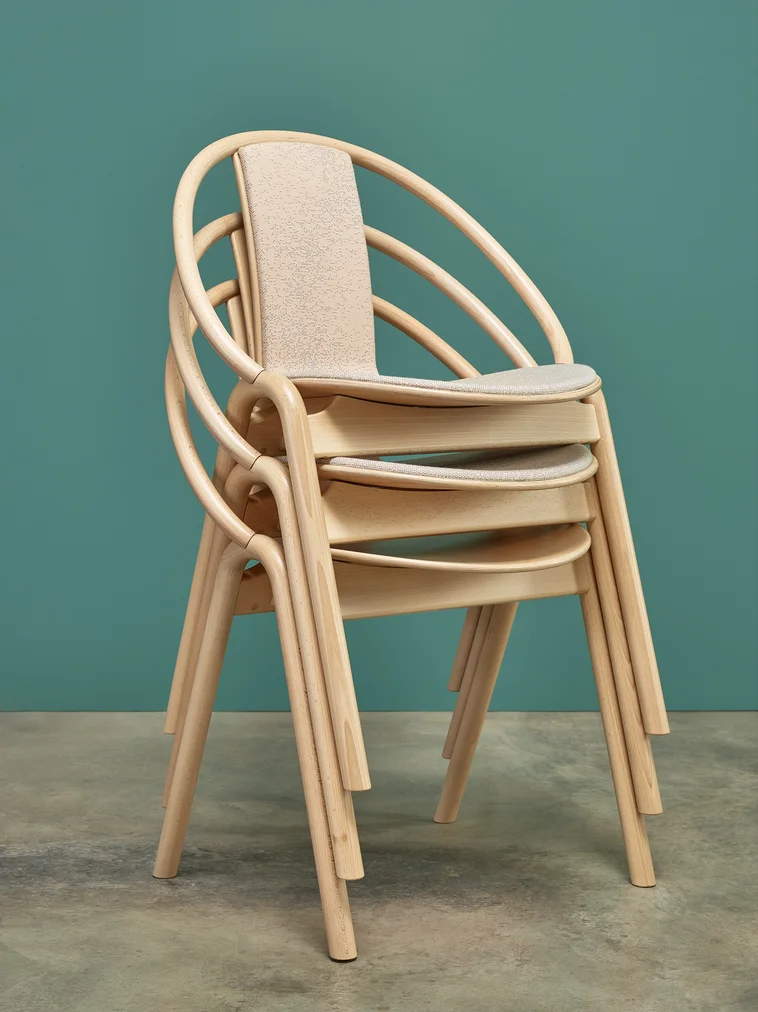
A Brief History of Thonet Bentwood Chairs
Timeless Elegance of Thonet Bentwood Chairs
Step into any elegant café or sophisticated dining space, and you might come across a classic piece of furniture that’s stood the test of time: the Thonet bentwood chair.
But have you ever paused to wonder about the history behind these iconic chairs? Today, we’ll delve deep into the fascinating history of bentwood chairs, particularly focusing on the pioneering designs from Thonet. So if you’ve ever pondered questions like, “What is a bentwood dining chair?” or “Why are Thonet bentwood chairs held in such high regard?”, you’re about to embark on an informative journey.

Michael Thonet: Crafting the Curve
In the annals of furniture design, few names stand out as prominently as Michael Thonet. Originating from 19th-century Germany, Thonet wasn’t just a craftsman; he was a visionary. He saw beyond the conventional design methodologies of his time and envisioned a future where furniture wasn’t just about function—it was about merging function with artistry.
His association with bentwood dining chairs isn’t just a matter of chance or fleeting fame. Instead, it’s a testament to his relentless pursuit of innovation. Thonet was not content with the status quo. He sought to push boundaries and challenge the traditional norms of furniture-making. His experiments and dedication to the craft led him to pioneer a technique that would forever change the world of furniture design: steam-bending wood.
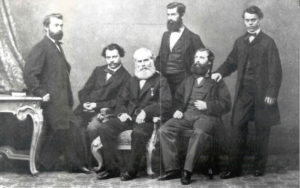
This revolutionary technique allowed Thonet to manipulate wood in ways previously thought impossible, giving rise to intricate, elegant curves and shapes. These designs were not just aesthetically pleasing but also offered unmatched durability and comfort. The very essence of bentwood furniture emerged from Thonet’s workshops, setting new standards in design and manufacturing.
As Thonet’s creations gained recognition, they quickly became emblematic of a new era in furniture design. His chairs were no longer mere seating objects; they were statements of style, elegance, and innovation. Today, when we admire a Thonet bentwood chair, we’re not just looking at a piece of furniture—we’re witnessing a piece of history, a testament to one man’s passion and vision that reshaped our understanding of design.
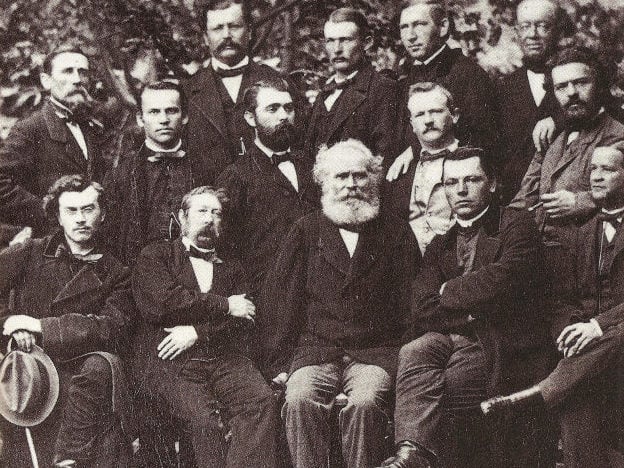
The Magic Behind Thonet Bentwood Chair’s Curves
While the name Michael Thonet might instantly evoke images of sophisticated, curving chairs, the genius of his work lies deeply rooted in the method he employed: the bentwood technique. But what exactly is bentwood furniture, and how did it transform the furniture landscape?
Bentwood, as the name suggests, involves bending wood into desired shapes. However, it’s not as simple as it sounds. The process involves carefully steaming pieces of wood to increase their flexibility, then shaping them into curves and allowing them to dry and solidify. The result? Strong, resilient furniture with elegant curves and contours that conventional carpentry methods couldn’t achieve.

Before Thonet’s innovations, furniture with such graceful curves was labour-intensive, often involving carving out wood, leading to wastage and weaker points in the furniture. Thonet’s bentwood technique was a game-changer. It introduced efficiency, reduced waste, and most importantly, brought forth designs that were both durable and aesthetically superior.
Thonet’s bentwood chairs were more than just visually captivating. Their resilience meant they could withstand everyday wear and tear better than many other chairs of the era. Moreover, the streamlined manufacturing process meant that these chairs could be produced on a larger scale, making high-quality design accessible to a broader audience.
But the bentwood technique wasn’t just about efficiency or durability. It was an art form in itself. The fluid curves, the seamless junctions, and the organic forms echoed nature’s beauty, resonating deeply with people’s innate appreciation for aesthetics.
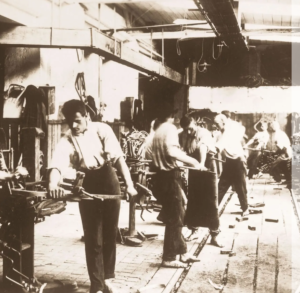
A Thonet Bentwood Chair That Defined an Era
Exploring bentwood dining chairs’ history highlights the No. 14 chair, dubbed the “chair of chairs”. This piece exemplifies Thonet’s bentwood method and his vision of functional, scalable, beautiful furniture.
Born from Michael Thonet’s workshop in the mid-19th century, the No. 14 chair, later known as Model 214, was a masterpiece of design simplicity. Comprising just six pieces of steam-bent wood, ten screws, and two nuts, its elegance lay in its minimalism. Emerging as a symbol of Thonet’s ingenuity, it effortlessly combined functionality with an aesthetic that has remained timeless for over a century.
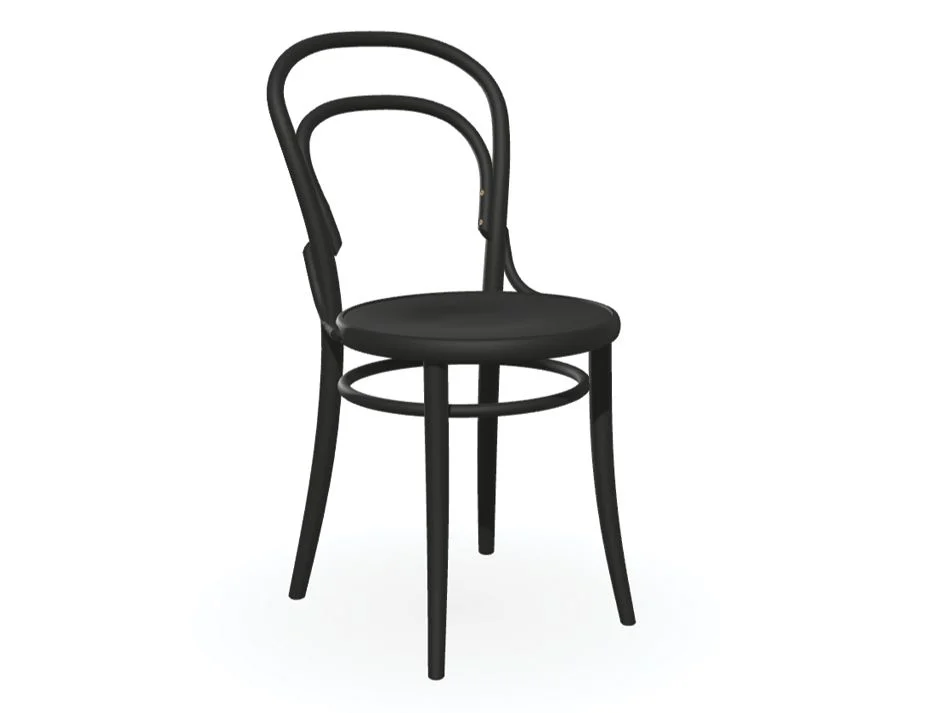
What set the No. 14 apart was not just its design, but its adaptability. It found its place in cafes, homes, offices, and public spaces, becoming a ubiquitous symbol of European furniture design. Its success was also bolstered by Thonet’s forward-thinking approach to production and distribution. Recognizing the potential for global appeal, he ensured the chair was easy to assemble and disassemble. This flat-pack design allowed for efficient shipping, making it one of the first examples of flat-pack furniture, long before the concept became a global trend.
The No. 14’s universal appeal was further cemented by its affordability. Thonet’s streamlined production process reduced costs, ensuring that high-quality design was no longer a luxury reserved for the elite. The chair became a beacon of democratic design, allowing people from various socio-economic backgrounds to enjoy the elegance and comfort of a well-designed piece of furniture.
Today, the No. 14 remains a testimony to Thonet’s vision and innovation. Its timeless design, combined with its rich history, ensures its continued relevance and admiration in contemporary interiors. As we reflect on its journey, it’s evident that the No. 14 is not just a chair; it’s a narrative of innovation, vision, and the transformative power of design.

Global Popularity & Influence: Beyond Borders & Time
As the allure of Thonet’s bentwood chairs began to resonate with a growing audience, it wasn’t long before their fame spread far beyond the confines of Thonet’s workshop and Germany’s borders. The chairs came to symbolize a confluence of style, innovation, and affordability, and the world took notice.
European cafes quickly adopted Thonet chairs. From Paris streets to Vienna alleys, they defined café culture. Their lightweight build is suited to outdoor setups during good weather. Their sturdy design handled daily wear well. Enchanted visitors and tourists spread tales of the chairs’ comfort, boosting their worldwide popularity.
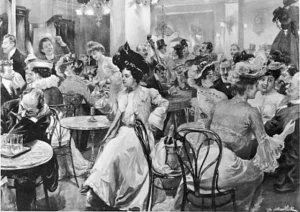
But the reach of bentwood dining chairs wasn’t restricted to cafes. They began gracing the interiors of prestigious hotels, renowned theatres, and even illustrious cruise liners. Their versatile design allowed them to fit seamlessly into various décors, from the ornate to the minimalist.
The advent of global trade and exhibitions further propelled the popularity of Thonet’s designs. World fairs and international design exhibitions became platforms where bentwood dining chairs were showcased, earning accolades and catching the eyes of global buyers. By the turn of the 20th century, the Thonet name and its association with quality bentwood furniture had become a global phenomenon.
It wasn’t just the general populace that was enamoured by Thonet’s creations. The design community too, took inspiration. Emerging design movements, especially the Modernist and Bauhaus schools, drew from the principles of functionality and simplicity that Thonet’s chairs embodied.
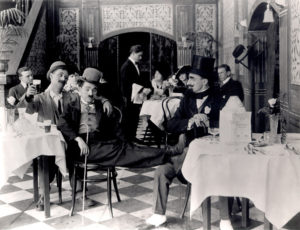
Characteristics of Thonet’s Bentwood Chairs
Simplicity and Elegance
One of the most distinguishing traits of Thonet’s bentwood chairs is their sheer simplicity. Stripped of unnecessary ornamentation, these chairs showcased the beauty of clean lines and smooth curves, resulting in an understated elegance that resonated with a wide audience.
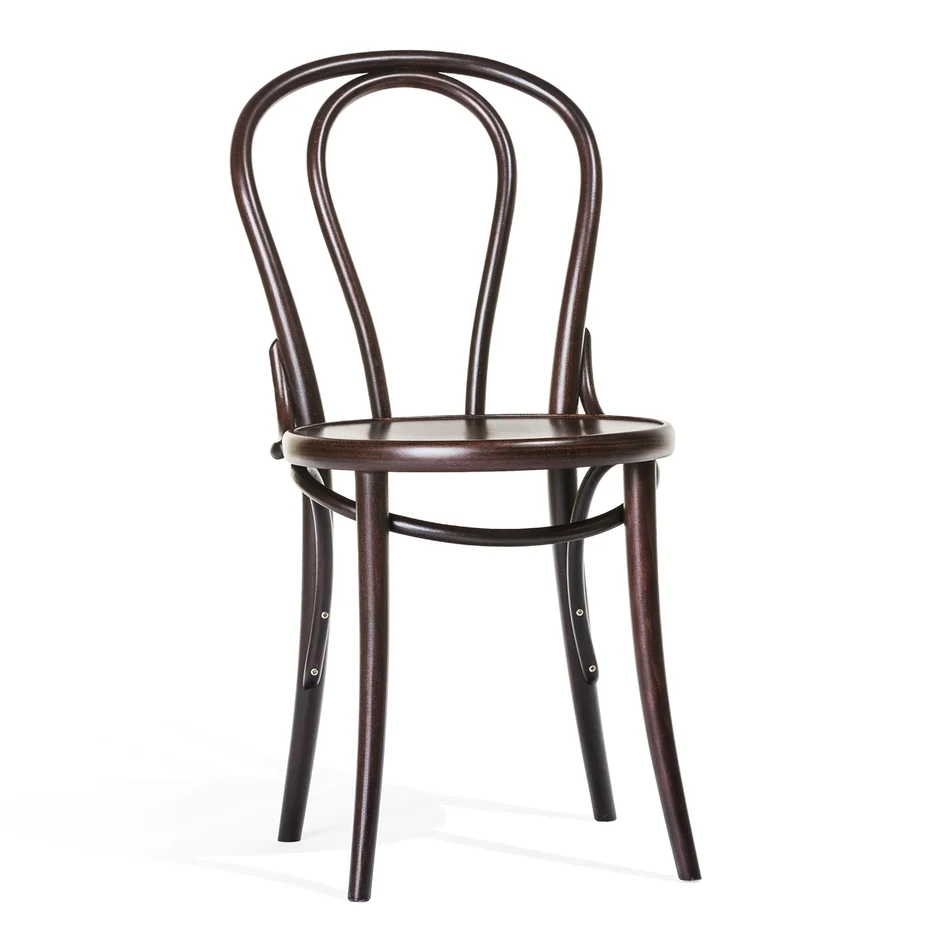
Strength in Curves
The bentwood process, by its nature, imparts a remarkable strength to the wood. The continuous curve, devoid of joints or breaks, means the chairs can handle significant weight and stress, making them both durable and reliable.
Furthermore, this seamless design also contributes to the chair’s elegant appearance, merging form and function seamlessly.
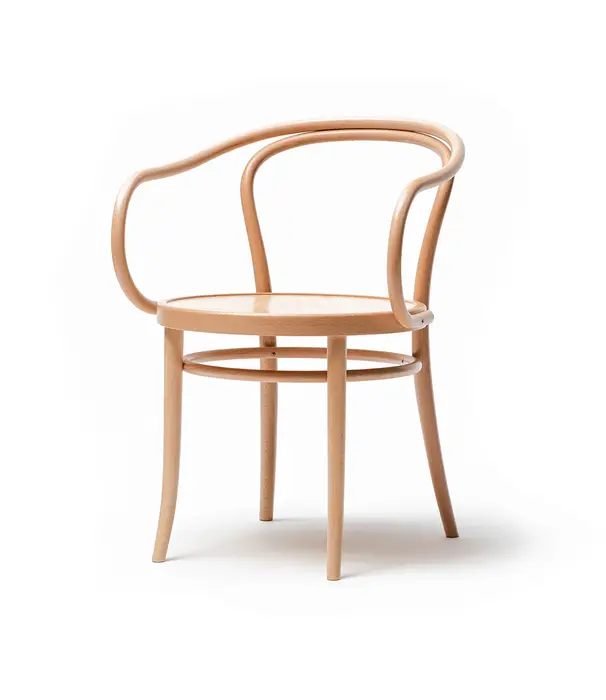
Versatility in Design
The foundational design of Thonet chairs allowed for numerous variations. From different backrest designs to varied leg configurations, Thonet and subsequent designers found a canvas in the bentwood chair that was ripe for creative exploration.
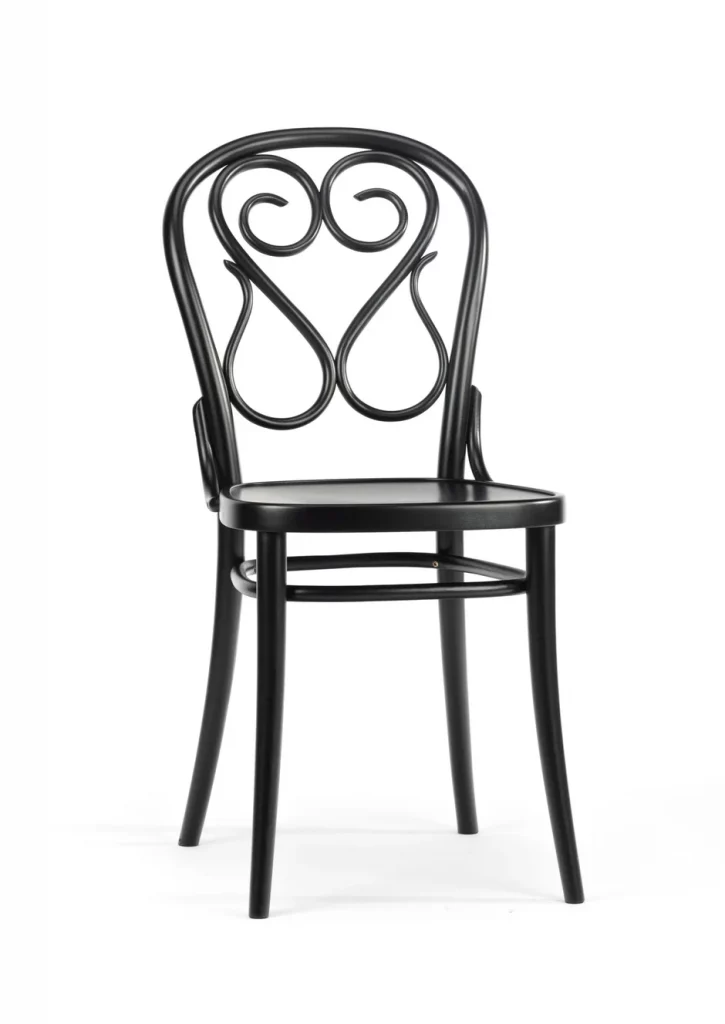
Affordability and Mass Production
Thonet’s innovative manufacturing methods meant that these chairs could be produced on a large scale without compromising on quality. This mass production translated to affordability, making high-end design accessible to a larger segment of society.
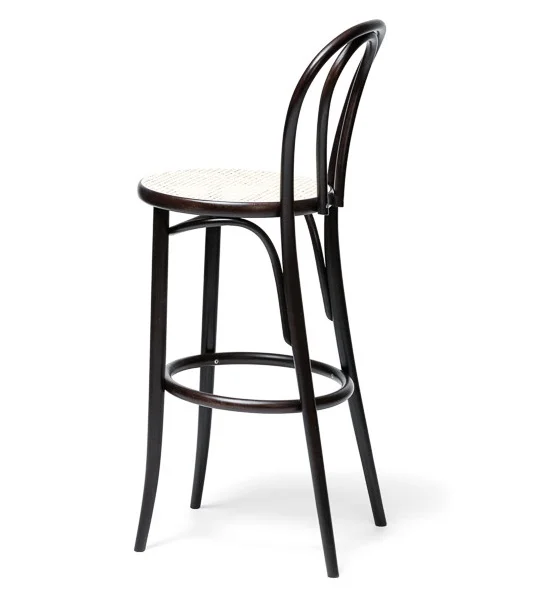
Natural Aesthetics
The use of wood, and particularly the visible wood grains in the finished product, provided a warm and organic feel to the chairs. This natural aesthetic made them versatile pieces that could fit into various interior themes, from the rustic to the refined.

Compactness and Transportability
The design of these chairs, especially the iconic No. 14, took into consideration the logistics of transportation. Being easily disassembled meant they could be packed compactly, shipped efficiently, and then reassembled without the need for specialized tools.
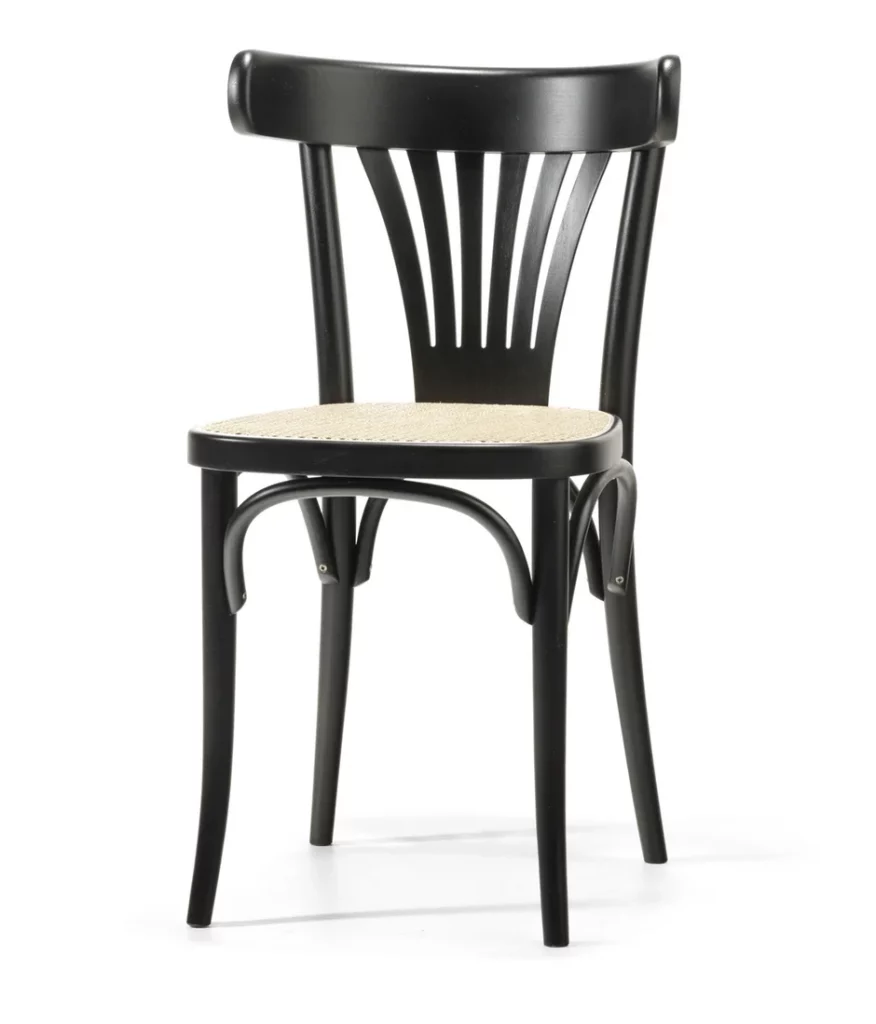
Comfort and Ergonomics
Beyond their visual appeal, Thonet’s bentwood chairs were designed with user comfort in mind. The curved backrests and contoured seats ensured that users could sit for extended periods without discomfort, making them a favourite in cafes and public spaces.
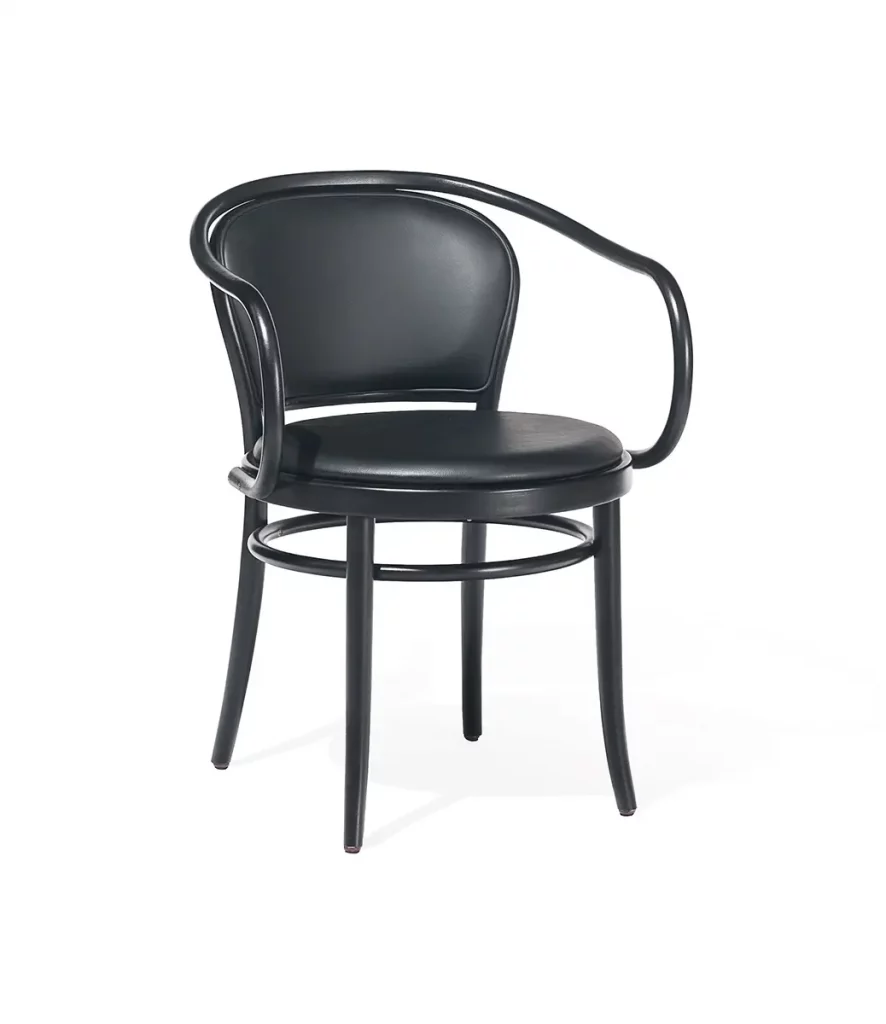
Modern Iterations and Continued Legacy
Thonet’s bentwood chair’s lasting appeal spans decades and inspires modern versions. While the core design persists, today’s designers refresh these classics to match current styles and demands.

Contemporary Materials: While the original bentwood chairs championed the use of wood, modern iterations have seamlessly incorporated materials like metals, plastics, and even sustainable alternatives, giving these chairs a fresh look while retaining their iconic curves.
Fusion Designs: Today’s designers often fuse the bentwood aesthetic with other popular design languages. Whether it’s a blend of mid-century modern flair with bentwood curves or adding Scandinavian minimalism to the mix, the results are both unique and captivating.
Ergonomic Enhancements: As the understanding of ergonomics has evolved, so have the designs of bentwood stools. Modern versions often offer enhanced lumbar support, adjustable features, and cushioning, ensuring that they cater to the comfort demands of the 21st-century user.
Eco-conscious Adaptations: In an age increasingly focused on sustainability, many designers are revisiting the bentwood technique using eco-friendly materials and processes. This not only aligns with global sustainability goals but also introduces the design to a new generation of environmentally-conscious consumers.
Collaborative Collections: The Thonet brand itself, acknowledging the evolving design landscape, has often collaborated with contemporary designers. These partnerships bring fresh perspectives to the classic chair bentwood design, resulting in limited edition collections that are both nostalgic and avant-garde.
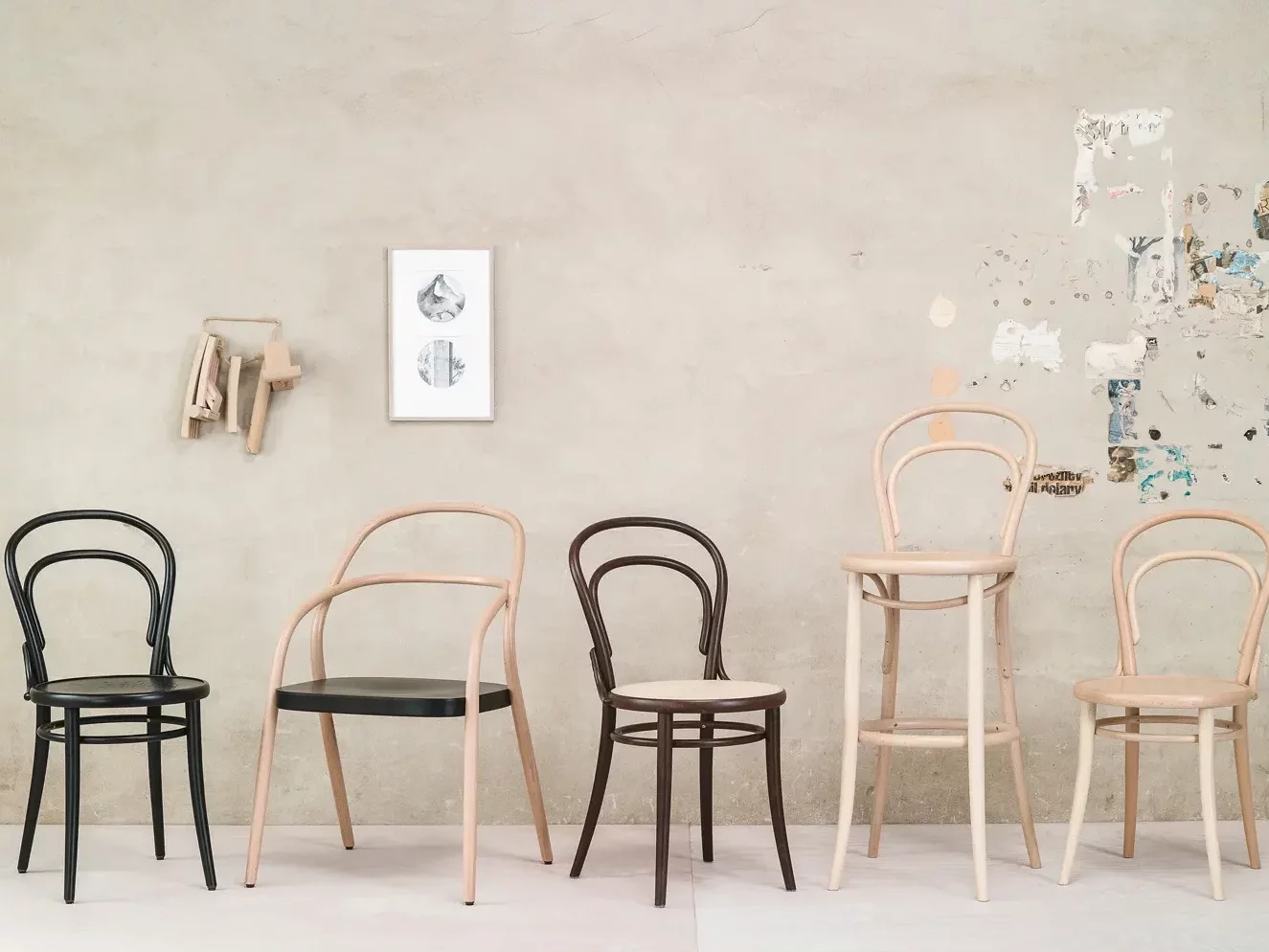
Thonet Bentwood Chair’s Company Today
Thonet’s name represents more than historical furniture design prowess; it signifies a living legacy. Rooted in rich history, the Thonet company embodies modern innovation and craftsmanship in its Thonet bentwood chair collections among others.
In current Thonet workshops, old traditions meet new technologies. Age-old wood-bending techniques pair with modern machinery and software for precision, exemplifying Thonet’s dedication to heritage and modern design. Today, Thonet’s catalogue goes beyond classic Thonet bentwood chairs. They offer a diverse furniture range, from modern office sets to home decor including bentwood dining chairs and bentwood stools. Every item, regardless of its era, reflects Thonet’s distinct quality and the legacy of Michael Thonet.
The company emphasizes community engagement and sustainability, often through hosting design workshops. They prioritize green initiatives and the design of sustainable bentwood furniture. For Thonet, the legacy extends beyond furniture to positive societal contributions, continuing the history of Thonet furniture through each Thonet chair and Thonet stool that comes out of their workshops.
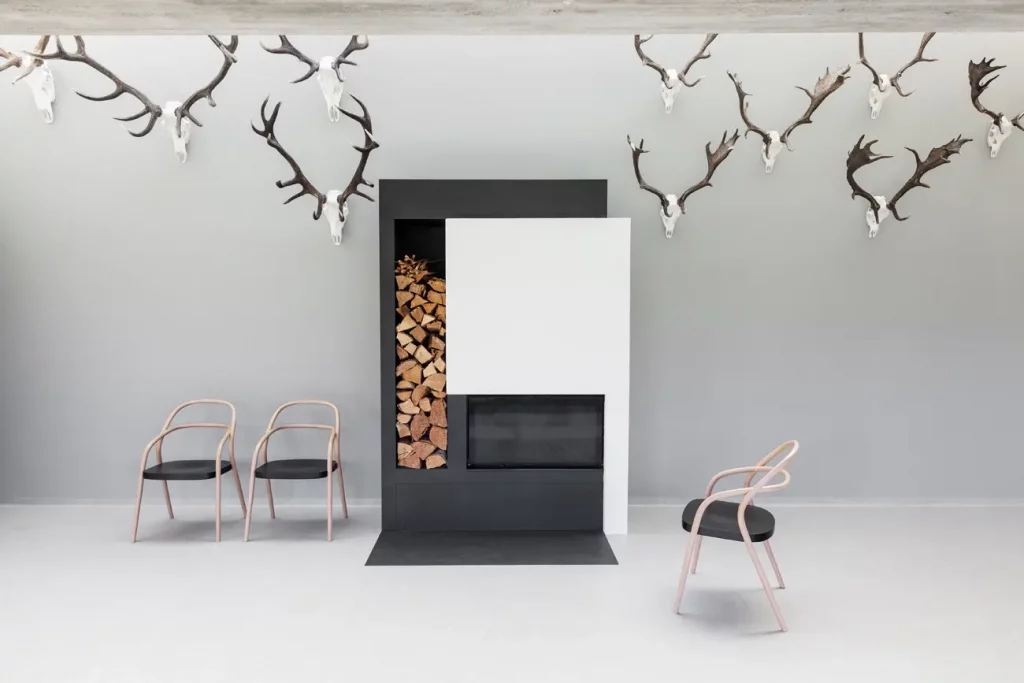
Celebrating Timeless Design and Vision of Thonet Bentwood Chairs
Thonet bentwood chairs aren’t mere furniture; they embody vision, innovation, and timeless design. From Thonet’s techniques to current versions, they highlight passion-infused craftsmanship.
For those curious about “bentwood furniture” or fans of Thonet’s design, the story offers insights and inspiration. It underscores innovation’s power, simplicity’s beauty, and timeless design. Design lovers, history enthusiasts, or admirers of quality, Thonet’s legacy encourages reflection on a journey of vision and enduring elegance.
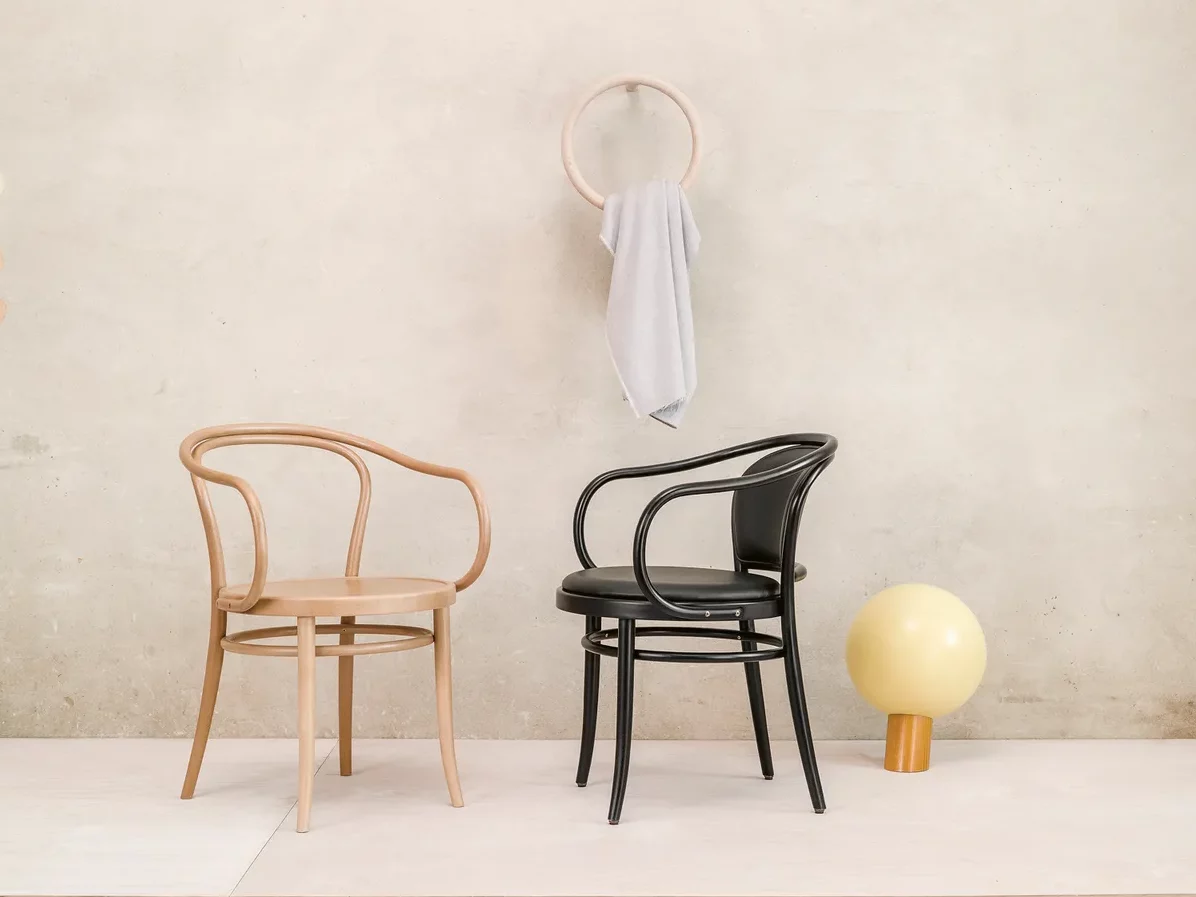
Frequently Asked Questions
The bentwood design emerged in the mid-19th century, pioneered by Michael Thonet.
Bentwood chairs are renowned for their strength and durability, thanks to the robustness of the bentwood technique.
While Thonet chairs prioritize aesthetics and durability, many users find them comfortable, especially given their ergonomic designs.
The Thonet No. 14 chair, introduced in the 19th century, is known for its affordability, ease of assembly, and transport. Its design was a game-changer, making stylish seating available to a broader audience.
Authentic Thonet chairs, especially vintage pieces, can be quite valuable due to their historical significance and timeless design.
